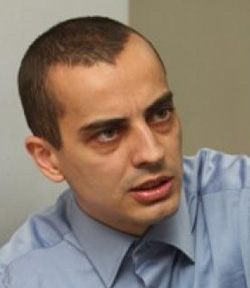There are around 2,000 monuments, sculptures and bas-reliefs in Sofia, commemorating outstanding individuals and significant events. Some we pass by every day and know well, others we are not aware even exist. Until recently any information about their history and what they stand for was scattered and had to be gleaned from all kinds of different sources. Now, there is one place it can be found online – www.registersofia.bg.
The project was carried through by Sofia municipality, in conjunction with the Regional Museum of History, Sofia. At this time the register includes more than 200 sites in all parts of the capital city, all of them part of Sofia’s history and the data base is constantly being added to.
More about the project from Sofia Deputy Mayor for education and culture Todor Chobanov:
 “The history of the city is more than its streets, their names or the squares, there is the vitally important question of our monuments. Sites that are a reflection of our historical memory, a reminder of landmark events and individuals, places and artistic elements that play a vital role in the collective memory of Sofia. By force of the amendments to the ordinance for naming and renaming municipal locations, our Regional Museum of History was tasked to compile a single register of all monuments and artistic elements. The aim of the register is to provide easy–of-access information about them – where they are, what they are like, who their author is and what their status is. That is an enormous amount of work. About a year ago the museum’s archives contained information about 500 sites or so, but by including the so-called artistic elements, their number will increase significantly.”
“The history of the city is more than its streets, their names or the squares, there is the vitally important question of our monuments. Sites that are a reflection of our historical memory, a reminder of landmark events and individuals, places and artistic elements that play a vital role in the collective memory of Sofia. By force of the amendments to the ordinance for naming and renaming municipal locations, our Regional Museum of History was tasked to compile a single register of all monuments and artistic elements. The aim of the register is to provide easy–of-access information about them – where they are, what they are like, who their author is and what their status is. That is an enormous amount of work. About a year ago the museum’s archives contained information about 500 sites or so, but by including the so-called artistic elements, their number will increase significantly.”
There are many reasons why there has been no such register thus far, one of them being the fact that the so-called artistic and decorative elements have now been included in the list, as they are part of the urban landscape. Some of the monuments and plaques have been put up for reasons which seem unclear, or the author is anonymous. One such example is the sculpted head of a Bulgarian khan in front of an apartment building in Lozenets residential area, of which nothing is known.
Museum workers say they are hoping to be helped by volunteers and interns in collecting the information about the authors of the monuments more quickly.
Any members of the public who have photographs or information about a given monument can also contribute. For now, the website is only in Bulgarian, but once a sufficient amount of data has been collected about the sites, an English-language version is planned.
English version: Milena Daynova
"We cannot escape from modern technologies, but we must think about how we can use artificial intelligence to improve the quality of education without losing human contact," said Mimi Nicheva, head of the Bulgarian Sunday School "Sts...
Nearly two centuries ago, in the distant 1838, the Bessarabian Archbishop Dmitry Kishinev and Khotinsky consecrated the magnificent Orthodox church "The Holy Transfiguration of the Lord" , built with voluntary donations and labor by the Bulgarian..
Bringing youthful energy, colour and cheer to the Bulgarian National Radio studio, students from the Bulgarian Sunday School Dr Petar Beron arrived from Larnaca. The group from Cyprus — 16 pupils aged between 14 and 19 — is currently on a week-long..
“The end is near – let’s go out with style!” This is the motto of the 2026 Gabrovo Carnival, marking the start of the so-called fifth season of the..
Bulgarian compatriot Nina Vasileva-Zaneshev is one of the examples among the diaspora abroad, who give us confidence that wherever they..

+359 2 9336 661
